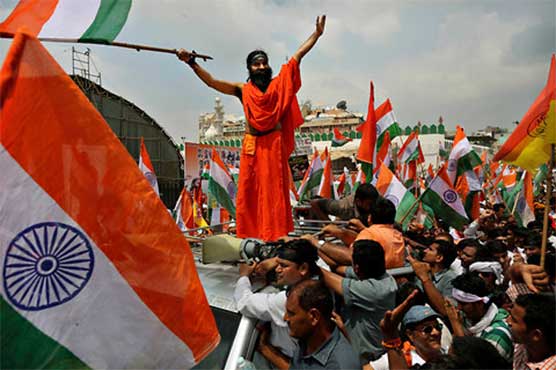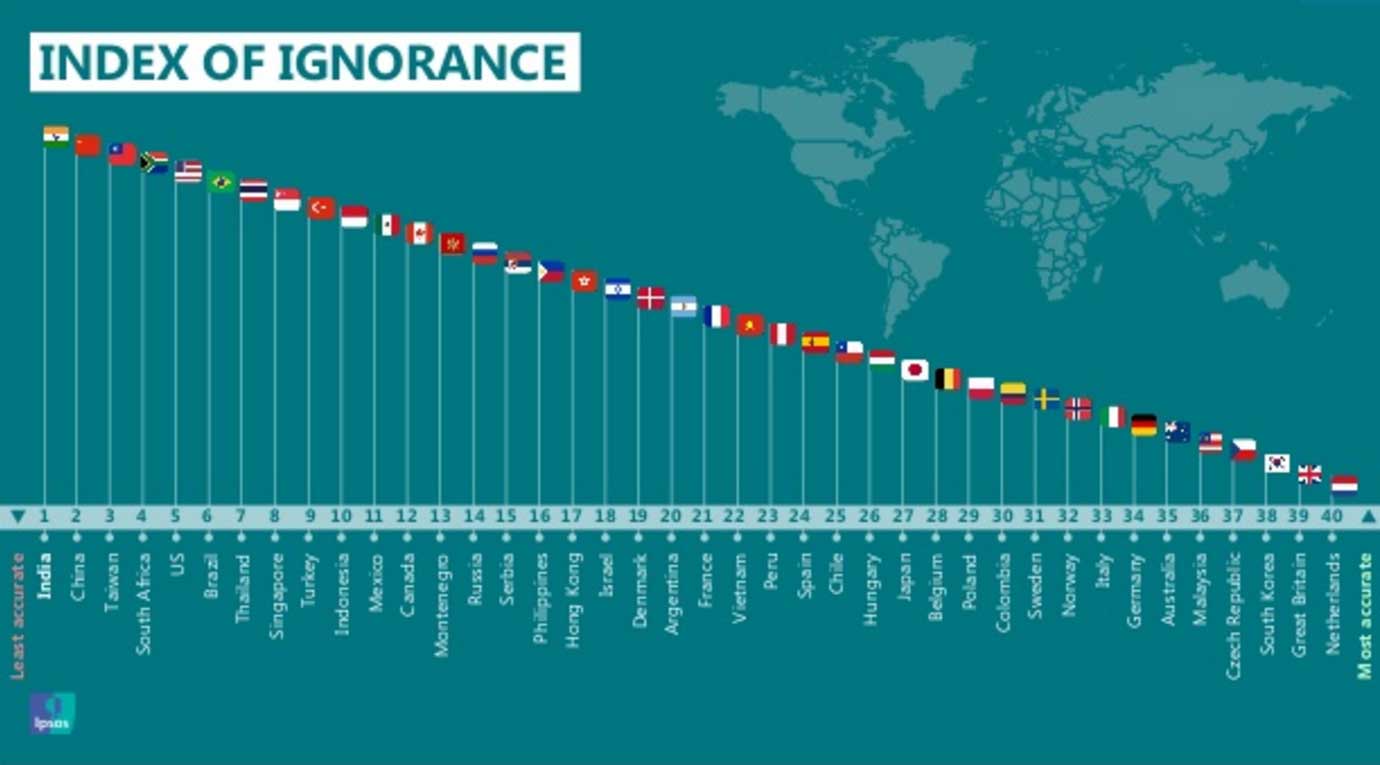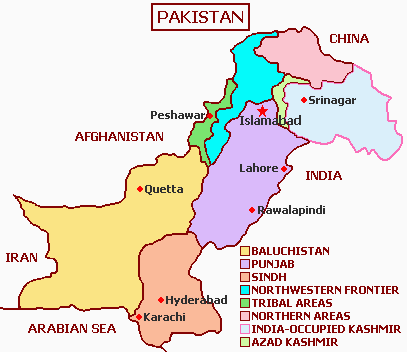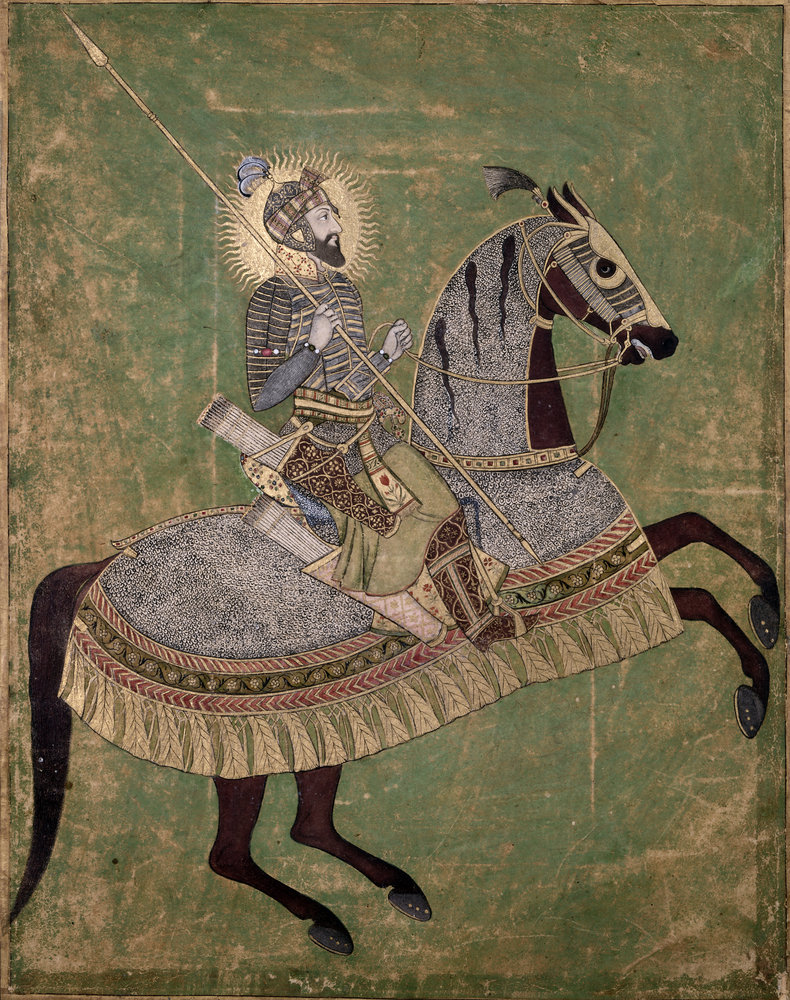Pakistan and Syria: Centers of the Great Game
By Sajjad Shaukat
Hans J. Morgenthau opines, “The true nature of the policy is concealed by ideological justifications and rationalization. Therefore, the ideology provides a mask behind which the ulterior motives are concealed…there is a close relationship between interest and ideology…the annexation of the backward states by Great Britain and France as their colonies was described as educating, civilizing and humanitarian mission, a sort of white man’s burden, while the real objective was economic exploitation of the former. Annexation was an act of imperialism. But to disguise it humanitarian ideology was advanced…one of the significant aspects of ideology is that it can be described as a cloak for real foreign policy objective.”

Palmer and Perkins write, “Just as power became the instrument of ambitious nationalism and state’s leaders, it has now become the tool of ideologies…ideologies, in fact, are futile source of international conflict…they can be used to obscure the real facts of a situation or the real motives of ambitious leaders.”
Karl Mannheim also uses ideology in this sense by saying, “In this form the ideas are more or less conscious disguise of the real nature of a situation.”
Hitler and the Nazi Party had come to power with the avowed purpose of conquering colonies and foreign lands for the Germans. They must have a “living space”-‘Lebensraum’ as the Nazis called it for the “living surplus German population and find raw materials and markets for German industrial goods”.
Religious fervour inspired by ‘Hitlerite’ Germany, which was supported by the country’s industrial and financial magnates, wanted to establish its domination first over Europe and then over the entire world.
Similarly, after the 9/11 tragedy, by using the ideologies of colonialism and neo-imperialism (Indirect control), the US-led Western allies attacked and occupied Afghanistan and Iraq, while compelling other Muslim countries and Pakistan to join Bush’s phony war on terror. Under the cover of freedom and democracy, the aim of democratizing Afghanistan and the Middle East was propagated by the United States. But, the real motive behind was to get control over the gas and oil of Central Asia, the Caspian Basin, Iraq and other countries of the Middle East. The pretexts of Osama Bin Laden and Weapons of Mass Destruction were also used in case of Afghanistan and Iraq respectively with a view to rationalizing the objective. While Bin Laden had denied his involvement in the 9/11 catastrophe and no WMDs were found in Iraq.
Influenced by the Zionist planners, Bush’s family, some neoconservatives and the Jews who are well connected to oil and energy companies wanted to enhance their business interests in the pretext of rooting out Islamic militants or terrorism. Under the mask of the so-called war on terror, they also planned to destabilize the Muslim countries to obtain the sinister designs of Israel.
When during the regime of the President Gen. Pervez Musharraf, Pakistan initiated the construction of Gwadar deep-seaport in Balochistan province in March 2002 with Chinese assistance, sirens went off in the capitals of some European countries, especially the US, India and Israel which took it as a threat to their global and regional plans.
Located on the southwestern coast of Pakistan, Balochistan’s Gwadar seaport is close to the Strait of Hormuz from where more than 17 million barrels of oil passes every day. Its ideal location among South Asia, the oil-rich Middle East, and oil and gas-resourced Central Asia has further increased its strategic significance. Besides, Balochistan’s abundant mineral resources irritate the eyes of the US, India and Israel which intend to destabilize Pakistan for their collective aims, as the latter is also the only nuclear country in the Islamic World. However, development in Pakistan’s province of Balochistan has shifted the gravity of the Great Game of Central Asia to Pakistan.
In fact, Pakistan considers that peace in Afghanistan is a guarantee of peace in Pakistan, therefore, has been striving for the same in utter sincerity. Enemies of Afghanistan and Pakistan—India and the US do not intend to see the peace and prosperity in the region. Sadly, Islamabad’s dominant role in Afghanistan’s peace process under the Quadrilateral Coordination Group (QCG) has been sabotaged by the ill-wishers. Killing of the Taliban leader Mullah Akhtar Mansur by the CIA-operated drone attack in Balochistan has badly derailed Afghan dialogue process and violence is likely to surge in Afghanistan. It seems that a dual game is on to pressurize Pakistan to bring Afghan Taliban either for the dialogue or to take action against them. US, India and Israel have built a hostile nexus for the Great Game and are pressurizing Pakistan by limiting its choices.
In this regard, trust deficit has deepened between Pakistan and the America. Therefore, on June 10, this year, a high-level delegation of the US visited Islamabad and met Pakistan’s Chief of the Army Staff Gen. Raheel Sharif and Adviser to the Prime Minister Nawaz Sharif on Foreign Affairs Sartaj Aziz Adviser separately.
During the meeting, expressing his serious concern on the US drone strike in Balochistan as a violation of Pakistan’s sovereignty, Gen. Raheel Sharif highlighted as to how it had impacted the mutual trust and was counterproductive in consolidating the gains of Operation Zarb-e-Azb against terrorists. He elaborated, “All stakeholders need to understand Pakistan’s challenges-inter-tribal linkages and decades-old presence of over three million refugees—blaming Pakistan for instability in Afghanistan is unfortunate—target TTP [Tehreek-i-Taliban Pakistan] and its chief Mullah Fazlullah in their bases in Afghanistan— Indian RAW and NDS [Afghan National Directorate of Security] are fomenting terrorism in Pakistan.”
Meanwhile, on June 12, 2016, Afghan security forces started unprovoked firing at Torkham border crossing as part of the double game of the anti-Pakistan entities.
However, RAW-Mossad-CIA backed, the Afghan NDS is inflicting harm to Pakistan. With latest capture of six NDS supported terrorists in Balochistan, the number of NDS assisted terrorists arrested and killed by Pakistani Intelligence agencies has crossed over 126. These foreign agencies are also assistine the TTP which is hiding in Nuristan and Kunar provinces of Afghanistan. Reportedly Mullah Fazlullah led TTP is being prepared to carry out a fresh wave of terror activities inside Pakistan, as the latter is center of the Great Game.
Particularly, CIA, Mossad and RAW which are well-penetrated in the ISIS and TTP are using their terrorists to destabilize Tibetan regions of China, Iranian Sistan-Baluchistan and Pakistan’s Balochistan by arranging the subversive activities. In this connection, the China-Pakistan Economic Corridor (CPEC) is their special target.
The long and porous border between Pakistan and Afghanistan is frequently used by the CIA-Mossad backed drug traffickers, criminals and terrorists to cause havoc inside Pakistan and Afghanistan.
It is notable that in response to the $46-billion Pak-China project of CPEC, Washington broadly supported New Delhi and Kabul, signing a deal with Iran for a transport corridor, opening up a new route to Afghanistan via the Iranian port of Chabahar. In this context, during his visit to Tehran, on May 23, 2016, the Indian Prime Minister Narendra Modi signed a deal to develop Iran’s Chabahar port. India will spend $500 million on the project. Chabahar—located about 1,800 kilometres south of Tehran—is more than just a port with an adjoining free trade zone. But, CPEC is much bigger and viable project then Chahbahar.
Notably, on June 13, 2016, a Chinese newspaper, Global Times has blamed India for damaging the prospects of Gwadar by investing in Chahbahar to isolate Pakistan; however, it will not succeed in its designs. The paper elaborated, “Pakistan’s Sindh Province saw a bomb attack against Chinese engineers and small-scale protests against the China-Pakistan Economic Corridor (CPEC) recently. Meanwhile, the Pakistani government claimed that anti-CPEC activities by foreign forces have been busted in Baluch Province. At the Beijing Forum held in Islamabad in late May, countries including the US and Japan have shown concerns over CPEC construction and even bluntly criticized the China-Pakistan friendship. CPEC is a significant part of the Belt and Road initiative, which is not only a domestic strategy of China to open up its central and western regions, but also Pakistan’s domestic development plan as well as regional integration.”
Nevertheless, the establishment of CPEC between deep Gwadar seaport of Balochistan and the historic Silk Road city in western regions-Xinjiang of China will connect Gilgit-Baltistan through Khunjerab Pass. Beijing would also build an international airport at Gwadar, while the roads infrastructure in Gwadar would link the communication network of rest of the country to facilitate transportation of goods.
When Gwadar seaport becomes fully operational, it would connect the landlocked Central Asian states with rest of the world. Being the commercial hub, the port is likely to increase volume of trade, bringing multiple economic and financial benefits to Pakistan. It will enable high-volume cargo vessels to move in the major oceans, giving China’s short and easy access to the Persian Gulf and the Indian Ocean.
The recent India-Iran-Afghanistan agreement to develop a trade route from Chabahar to Central Asia has been portrayed by Indian commentators as having changed the historical Great Game for control of the connection between South and Central Asia through Afghanistan. But, the project will remain a dream, as with the collapse of the inter-Afghan negotiations, Afghanistan is likely to witness a further escalation of conflict and chaos. It is also due to unrest in Afghanistan that the US-backed Turkmenistan-Afghanistan-Pakistan-India (TAPI) gas pipeline did not start.
In 2009, Pakistan and Tehran had signed the Iran-Pakistan-India (IPI) gas pipeline project without New Delhi, as the latter was reluctant in this context owing to its pro-US tilt. Since then, it has been named as the Iran-Pakistan (IP) gas pipeline project. The US had previously threatened Pakistan with sanctions, if it went ahead with the project.
America and Israel are seeing the Chabahar project with suspicion. To bolster its strategic contest with China and Russia, the US is moving towards a military alliance with India. America which is backing Indian hegemony in Asia, especially to counterbalance China is supplying New Delhi latest weapons, arms and aircraft. During President Barack Obama’s second visit to India, the US and India announced a breakthrough on a pact which would allow American companies to supply New Delhi with civilian nuclear technology, as agreed upon in 2008. During Indian Prime Minister Modi’s recent visit to America, President Obama strongly assured him to favour India’s membership in the coming meeting of the Nuclear Supplier Group. Earlier, Washington also pressurized the International Atomic Agency (IAEA) to sign an accord of specific safeguards with India. America had already contacted the NSG to grant a waiver to India for starting civil nuclear trade on larger scale.
But, the US-Iran ties could again become hostile, if new sanctions are imposed by the US Congress or differences arise over Iraq, Syria, Hezbollah or Israel. Although Iran’s nuclear issue has been settled, yet Israeli Prime Minister Netanyahu called it American historical blunder, and is still acting upon a war-like diplomacy against Tehran. If the pro-Israeli Donald Trump becomes American president, he would thwart the US-Iran relationship to secure Israeli dominate in the Middle East.
Now, Islamabad which has ignored the duress of Washington is convincing Tehran to start the implementation of the IPI project. In the recent past, high officials of Iran and Pakistan have met in this respect.
Taking note of US anti-Pakistan schemes, besides China, Pakistan has also cultivated its relationship with the Russian Federation. In 2010, Russian President Putin publicly endorsed Pakistan’s bid to join the Shanghai Cooperation Organisation (SCO) which includes Russia, China and four Central Asian Republics as permanent members. Putin remarked that Pakistan was very important partner for Moscow in South Asia and the Muslim world. In various summits, the SCO leaders displayed strength against the US rising dominance in the region and military presence of NATO in Afghanistan, near Central Asia, and are moving towards security cooperation. After participating in the Summit of the SCO in 2015, Pakistan and Iran got permanent membership of the SCO which is seen as anti-American club.
Nonetheless, due to Balochistan, Pakistan has become center of the Great Game. Therefore, CIA, RAW and Mossad have planned to accelerate acts of terrorism in the country.
As regards Syria, the country is another centre of the Great Game. In case, we see the resources of natural gas reserves in the whole Persian Gulf region, the motives of the CIA-led Saudi Arabia, UAE and Qatar in financing with billions of dollars to the opposition rebel groups, the Islamic State group (ISIS or ISIL) in Syria are to occupy the natural gas and oil of the Middle East.
Many analysts say that Russia supplies Europe with a quarter of the gas. America and its European allies which are now involved in the Syrian war want to end European dependence on Russia. American President Barack Obama has openly said to reduce Europe’s reliance on Russian gas.
According to Charis Chang, “Before the Syrian civil war, two competing pipelines put forward by Qatar and Iran aimed to transport gas to Europe through Syria…Qatar’s plans were first put forward in 2009 and involved building a pipeline from the Persian Gulf via Saudi Arabia, Jordan, Syria and Turkey. It was hoped the pipeline would provide cheaper access to Europe, but Syrian President Bashar al Assad refused to give permission for the pipeline to go through his territory…failed pipeline bidder Qatar and Saudi Arabia funded anti-Assad rebel groups between 2011 and 2013.”
Turkey which is another NATO member and is also involved in Syrian civil war still supports the plan of the US-led Europe regarding the gas pipeline from the Middle East—Syria to Europe.
- William Engdahl writes, “In July 2011, Syria, Iran and Iraq signed a gas pipeline energy agreement…take three years to complete in the midst of the NATO-Saudi-Qatari war to remove Assad. The pipeline would run from the Iranian Port Assalouyeh in the Persian Gulf, to Damascus in Syria via Iraq territory…Lebanon’s Mediterranean port where it would be delivered to the huge EU market…the agreement would make Syria the center of assembly and production in conjunction with the reserves of Lebanon…the Iran-Iraq-Syria gas pipeline agreement ignited the full-scale Saudi and Qatari assault on Assad’s power, financing al Qaeda terrorists, recruits of Jihadist fanatics willing to kill Alawite and Shi’ite “infidels” for $100 a month and a Kalishnikov. The Washington neo-conservative war-hawks in and around the Obama White House, along with their allies in the right-wing Netanyahu government, were cheering from the bleachers as Syria went up in flames after spring 2011.”
Engdahl further writes, “Today the US-backed wars in Ukraine and in Syria are but two fronts in the same strategic war to cripple Russia and China and to rupture any Eurasian counter-pole to a US-controlled New World Order. In each, control of energy pipelines, this time primarily of natural gas pipelines—from Russia to the EU via Ukraine and from Iran and Syria to the EU via Syria—is the strategic goal. The true aim of the US and Israel backed ISIS is to give the pretext for bombing Assad’s vital grain silos and oil refineries to cripple the economy in preparation for a “Ghaddafi-”style elimination of Russia and China and Iran-ally Bashar al-Assad. In a narrow sense, as Washington neo-conservatives see it, who controls Syria could control the Middle East. And from Syria, gateway to Asia, he will hold the key to Russia House, as well as that of China via the Silk Road. Religious wars have historically been the most savage of all wars and this one is no exception, especially when trillions of dollars in oil and gas revenues are at stake. Why is the secret Kerry-Abdullah deal on Syria reached on September 11 stupid? Because the brilliant tacticians in Washington and Riyadh and Doha and to an extent in Ankara are unable to look at the interconnectedness of all the dis-order and destruction they foment, to look beyond their visions of control of the oil and gas flows as the basis of their illegitimate power. They are planting the seeds of their own destruction in the end.”
It is of particular attention that according to the retired NATO Secretary General Wesley Clark, a memo from the Office of the US Secretary of Defense just a few weeks after 9/11 revealed plans to attack and destroy the governments in 7 countries in five years, starting with Iraq and moving on to Syria, Lebanon, Libya, Somalia, Sudan and Iran. In an interview, Clark said that this strategy is fundamentally about control of the region’s vast oil and gas resources.
However, Russian-supported coalition and Assad’s forces have retaken several territories from the control of the rebels and the ISIS terrorists who are on flee. Recently, Russian-backed Iraqi forces have recaptured the city of Fallujah. It is due to skillful diplomacy of the President Putin that very soon, Syria will be liberated from the hold of the Israeli-led Western powers, including some Arab countries.
On the other side, Pakistan’s Army and primary intelligence agency ISI are very strong, as they have almost eliminated the CIA-RAW supported TTP and ISIS terrorists in Balolchistan and other areas of the countries. They will castigate the conspiracy against Pakistan, China and Russia.
Although Pakistan and Syria will remain the centers of the Great Game, yet owing to a prolonged war in Afghanistan, proxy wars in Syria and other vulnerable countries like Libya, Yemen and Somalia in wake of the mounting threat of terrorism and rapid increase in the cost of these conflicts which are bringing about multiple internal problems, America and its allies will lose the Great Game.
Sajjad Shaukat writes on international affairs and is author of the book: US vs Islamic Militants, Invisible Balance of Power: Dangerous Shift in International Relations
Email: [email protected]
Courtesy Veterans Today














